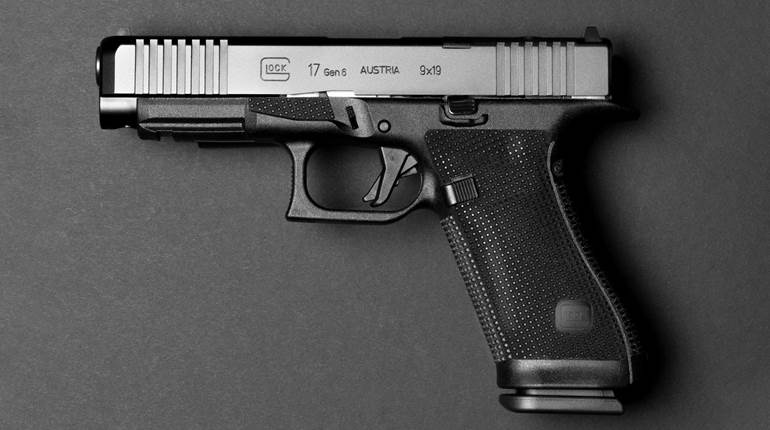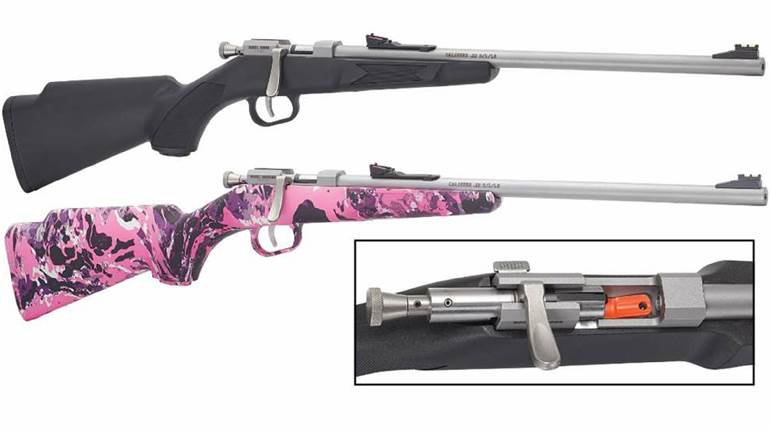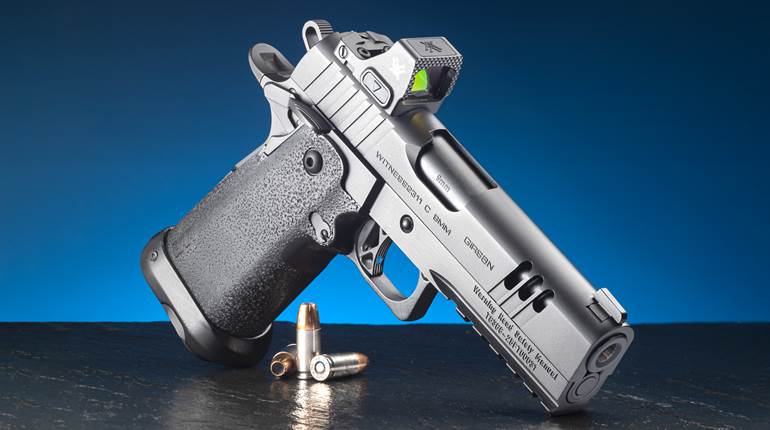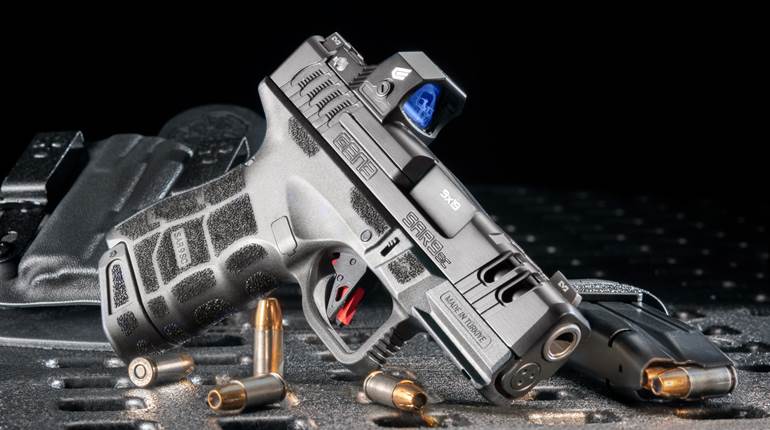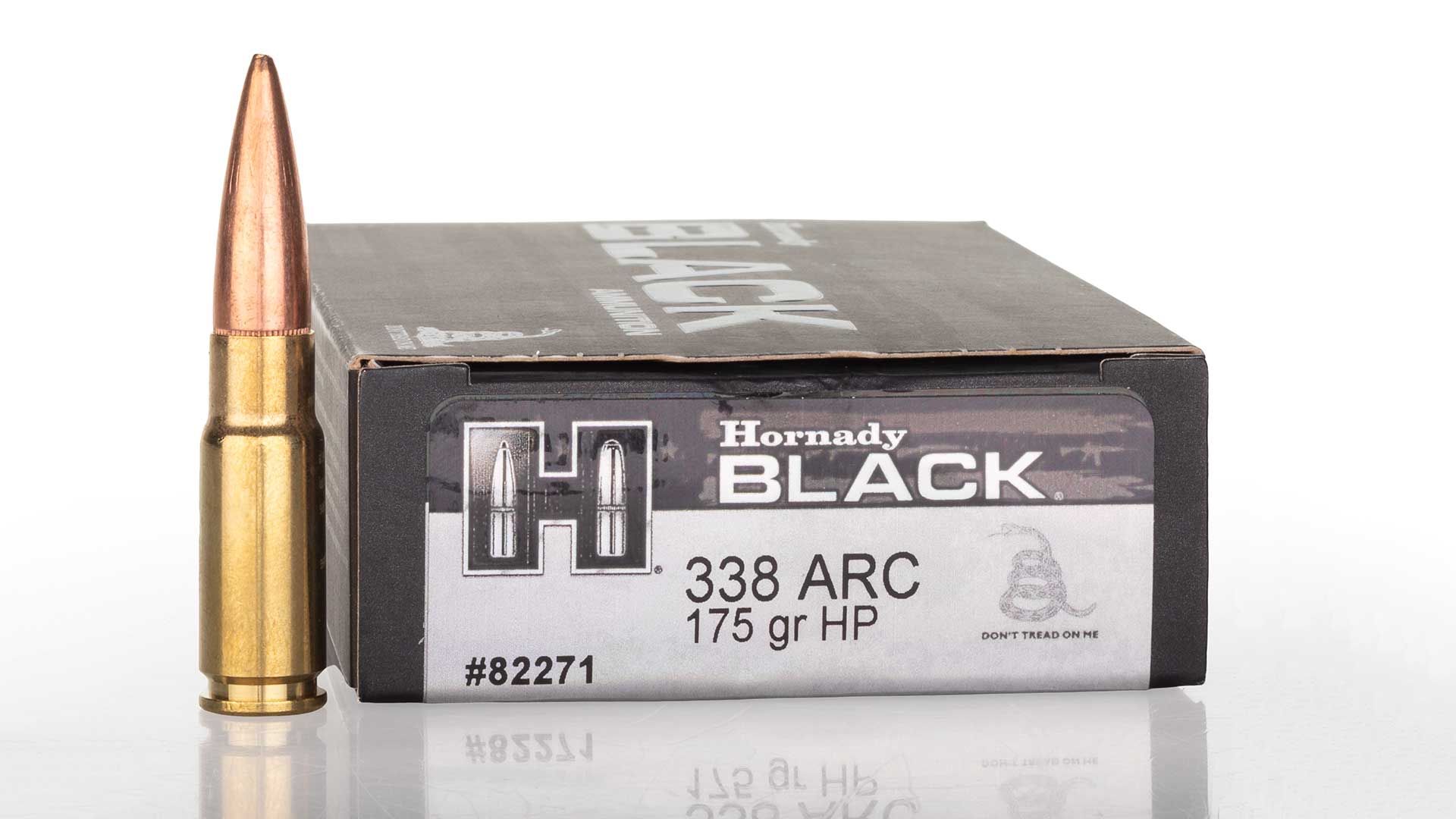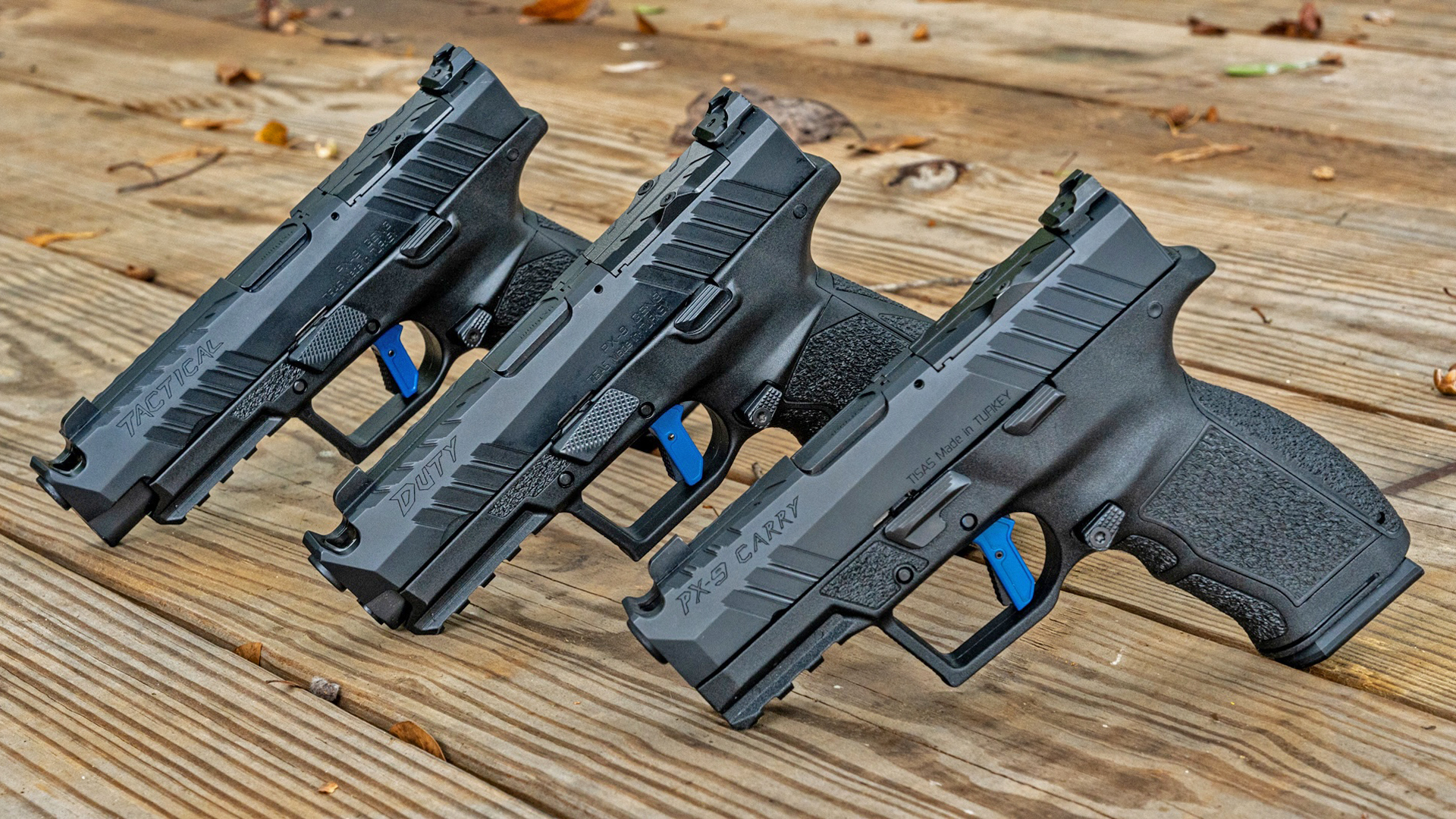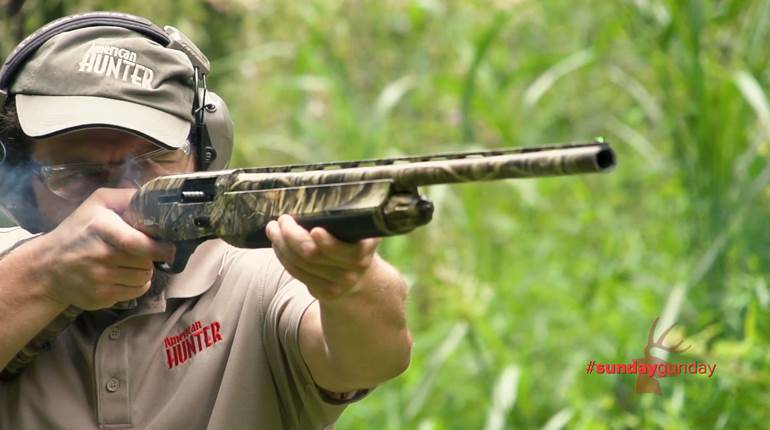
Walther Arms has a well-earned reputation for manufacturing high-quality centerfire semi-automatic pistols favored for military, law-enforcement and civilian self-defense applications. The company catalog already contained sub-compact “tactical” .22 Long Rifle pistols, but, near the end of 2022, Walther took its handgun lineup in a fresh direction with the release of the sporting WMP pistol chambered in .22 WMR. Here is a closer look at this pistol, which was designed for use in the field as a “kit gun.”
The WMP, which stands for Walther Magnum Pistol, is a fixed-barrel, direct-blowback-operated semi-automatic. Instead of the common striker-fired ignition system, the company opted for a double-action trigger paired with a recessed hammer that is visible through a port at the rear of the slide. The hammer is partially cocked by cycling the slide; it is then fully cocked by pulling the trigger. The result is a trigger that is consistent from shot to shot, exhibiting slight take-up followed by increased resistance about halfway through the trigger stroke before breaking cleanly. Our test pistol had a 3-lb., 13-oz., trigger pull, lighter than the 4-lb., 8-oz., pull weight listed by Walther.
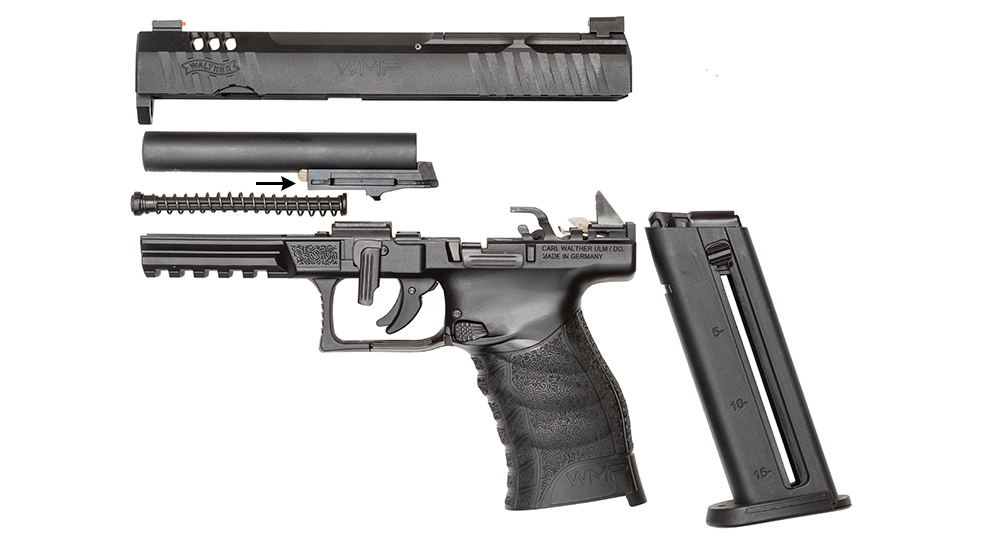
Some rimfire pistol models are slimmed and trimmed to reflect their smaller chamberings, but Walther opted to make the WMP a duty-size pistol with a footprint and feature set similar to those of the PDP centerfire models. Keeping the WMP in this size class has the benefits of a longer barrel, increased sight radius and a more spacious grip frame to accommodate a greater variety of hand shapes.
Although the WMP might appear to be a heavier handgun, the use of an aluminum slide reduces the pistol’s weight and lends it a light and handy feel. The stylized slide features canted front and rear cocking serrations, forward weight-reduction cutouts and a beveled ejection port. The factory-installed sight system consists of a polymer fiber-optic front sight paired with a serrated, U-notch, polymer rear sight that is drift-adjustable for windage. A second, shorter rear sight is provided with the pistol.
The WMP ships from the factory optics-ready with a removable steel cover plate and three polymer optic-mounting plates for the Docter, RMR and Shield footprints, along with the necessary hardware to use them. The optics slot is 2.20" long, which allows for a variety of red-dot makes and sizes to be used with this pistol; for our testing, a Swampfox Justice with a 3-m.o.a. dot was used.

The 4.25" carbon-steel bull barrel is secured to a locking block via a pair of hex-head screws. The front edge of the steel block is fitted with a polymer buffer that prevents the aluminum slide from coming into direct contact with it. The V-shaped rear portion of the block serves as a feed ramp. The steel block is locked into the polymer frame by four short rails that rest just below the two forward slide rails. The recoil assembly consists of a one-piece polymer guide rod fitted with a single captured round-wire recoil spring.
The black polymer frame features a 2.25"-long, five-slot Picatinny rail molded into the dustcover. Left- and right-side trigger finger touch points, with the same texturing as the grip frame, are found just above the capacious, squared-off trigger guard. The front of the trigger guard is curved and grooved to serve as a finger rest.
External controls include a left-side takedown lever and bilateral slide stops with slim levers couched between anti-snag frame extensions. The drop-free magazines can be released from the grip using any of four different controls, including bilateral side levers set into the trigger guard or the ambidextrous push-button release set just behind the trigger guard. The lightly beveled magazine well is configured to accept metal-lined polymer magazines that hold 15 rounds of stagger-stacked ammunition.
For the most part, .22 WMR has previously been reserved for use in rifles and revolvers. This is because chambering semi-automatic pistols for this slender round is technically challenging. Although the .22 LR and .22 WMR operate at the same maximum pressure levels (24,000 p.s.i.), the magnum’s longer tapered case can cause extraction issues when operating at the lower pressure levels generated by pistol-length barrels. Changes in bullet weight also affect operational pressures, which can cause reliability issues with some bullet weights.
Walther provides WMP owners with a detailed list of loads tested in-house (waltherarms.com/blog/walther-wmp-ammunition-recommendations). In short, this list shows the WMP operates most reliably using loads topped with 40- to 45-grain bullets made by CCI, Federal, Fiocchi and Hornady. Nevertheless, any loads selected should be thoroughly tested before taking it out into the field.
At the range, the WMP was a pleasure to shoot. The grip was comfortably hand-filling, and the red-dot provided quick and easy target acquisition. Although the .22 WMR cartridges produced an impressive amount of muzzle flash and noise for a rimfire, the recoil remained on par with a .22 LR semi-automatic. This low recoil paired with the light, smooth trigger pull contributed to satisfying 10-shot groups between 2.13" and 3.38" in size at 25 yards, for an average extreme spread of 2.85".
Most importantly, this pistol cycled reliably with all ammunition tested. It did not have any mechanical- or ammunition-related failures throughout the course of testing. One might reasonably expect a failure to feed or a faulty primer since this is a rimfire pistol, but this was not the case. Instead, the WMP proved to be impressively reliable for its chambering, making it an ideal trail and kit gun, a useful understudy for centerfire models and a great fit for dispatching small game.












